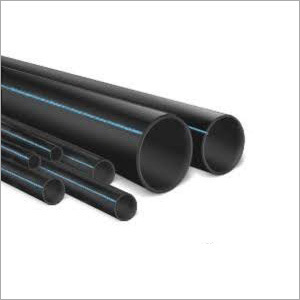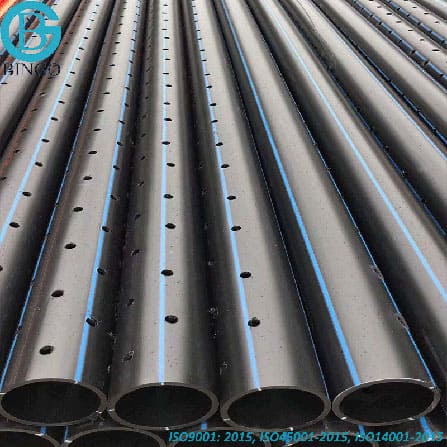How hdpe pipe suppliers Midland TX Are Transforming Agriculture
The Vital Actions for Effective Installation of HDPE Pipeline in Your Next Job
Successful installation of HDPE pipe needs cautious planning and execution. Trick steps include evaluating project requirements, preparing the site, and choosing proper joining methods. Each stage plays a critical role in guaranteeing the honesty and performance of the pipe. Comprehending these crucial actions can significantly affect the general success of the project - American Plastics HDPE Pipe for Oilfield. The subtleties of each action might hold the secret to overcoming typical difficulties faced during installation.
Understanding the Benefits of HDPE Pipe
High-density polyethylene (HDPE) pipe offers countless advantages that make it a preferred option for various applications. Its high resistance to corrosion and chemicals guarantees durability sought after settings, considerably prolonging the life-span of installations. Additionally, HDPE's adaptability enables for easier installment, especially in tough terrains, as it can flex without damaging. The light-weight nature of HDPE pipe streamlines transport and handling, decreasing labor expenses during installation.
HDPE pipe is known for its low friction coefficient, which boosts fluid flow and decreases power consumption. Its smooth building lowers the threat of leaks, contributing to better resource monitoring and ecological defense. Furthermore, HDPE is recyclable, lining up with sustainable techniques and reducing environmental impact. Overall, the mix of strength, versatility, and eco-friendliness makes HDPE pipeline a remarkable option for a wide range of tasks, from water circulation to commercial applications.
Planning Your HDPE Pipeline Installation
When intending an installment of HDPE pipeline, mindful factor to consider of a number of essential aspects is vital to protect a successful task. Job managers need to examine the details requirements of the pipeline, consisting of the intended use, flow rates, and environmental conditions. Comprehending these criteria will guide the selection of proper pipe dimensions and product grade.
Next, timelines must be developed, considering purchase schedules and any potential hold-ups. Coordination with local authorities for permits and governing compliance is additionally essential. Furthermore, a detailed budget should be prepared, encompassing all prices related to materials, labor, and machinery.
Last but not least, it is crucial to involve a certified team experienced in HDPE pipeline setup. Their know-how will certainly help minimize threats, guarantee adherence to industry requirements, and eventually add to the task's success. Extensive planning prepares for a smooth installation process and lasting performance of the HDPE piping system.
Preparing the Site for Installment
Appropriate website preparation is essential for the successful setup of HDPE pipeline. Before installation starts, the site needs to be extensively examined to assure it meets all necessary needs. This consists of checking the ground for existing structures, utilities, and possible threats that can impede the installation process.

Correct elevation and placement ought to be established to maintain a regular slope for drainage objectives. Appropriate water drainage around the installment website is also crucial to protect against water buildup, which can result in issues down the line.
Techniques for Signing Up With HDPE Water Lines
Accomplishing a trusted connection between HDPE pipes is vital for making certain the integrity and durability of the installation. Various methods exist for joining these pipelines, each fit for various job needs. Fusion welding is among the most common methods, using heat to bond the pipeline finishes together, producing a smooth and long lasting connection. This method can be more categorized into outlet fusion and butt fusion, relying on the pipe configurations.
Mechanical fittings are one more alternative, employing clamps and threaded connectors to sign up with sections of HDPE pipeline. While typically faster to install, they may require added upkeep gradually. Electrofusion is a specialized method that involves utilizing electrical current to warm and fuse the pipelines via specifically created installations, making certain a solid bond. Choosing the suitable joining strategy is important, as it directly influences the overall efficiency and integrity of the HDPE piping system in the designated application.
Checking and Examination of Installed Pipes
The screening and assessment of installed HDPE pipes are crucial to ensuring their capability and longevity. This procedure encompasses aesthetic inspection techniques, pressure testing techniques, and leakage discovery procedures to determine prospective problems. By using these approaches, experts can validate the stability of the installation prior to it is taken into usage.
Aesthetic Evaluation Techniques
Employing efficient visual evaluation methods is crucial for ensuring the stability of set up HDPE pipes. Examiners need to methodically analyze all noticeable areas of the pipeline to determine any indicators of damages, misalignment, or improper installment. Secret indicators to examine consist of joint integrity, surface area abnormalities, and connections. Examiners might make use of devices such as magnifying glasses or electronic cameras to enhance presence and detail. It is necessary to look for indicators of ecological stress, such as distorting or too much flexing, which can endanger performance. Regular documentation of findings allows for tracking adjustments in time and helps overview needed repair services. By adhering to established aesthetic assessment methods, job groups can notably minimize the threat of future failures toilet pipe connector and assure lasting reliability of the piping system.
Stress Examining Techniques
Visual evaluation offers as an initial step, yet it is not adequate on its own to guarantee the performance of set up HDPE pipelines. Stress screening methods are essential for ensuring the honesty of these systems. Typically, hydrostatic screening is used, where the pipes are loaded with water and subjected to pressure degrees over the intended operating stress. This technique assists identify weak points or prospective leaks. Pneumatically-driven screening can additionally be made use of, although it lugs greater threats as a result of the compressibility of air. Regardless of the approach selected, sticking to industry requirements and security methods is crucial. After carrying out stress tests, thorough paperwork is necessary to verify the results and validate that the setup fulfills all functional needs before continuing to the next stage of the project.

Drip Discovery Treatments
Exactly how can one assure that set up HDPE pipes are cost-free from leaks? Efficient leak detection procedures are essential to protect the stability of the system. At first, aesthetic evaluations ought to be performed, searching for indicators of water buildup or dirt erosion around pipe joints. Following this, stress testing can validate the system's toughness. An usual method is the hydrostatic examination, where water is presented under pressure, checking for declines that indicate prospective leaks. In addition, advanced innovations, such as acoustic sensing units or infrared thermography, can spot leaks that might not be visible. Regular surveillance and upkeep additional contribute to the durability of HDPE pipes, ensuring they remain leak-free throughout their functional lifespan. Proper documentation of these treatments is crucial for conformity and future recommendation.
Maintenance Tips for Long-Term Performance
To ensure the longevity of HDPE pipelines, developing a normal inspection routine is essential. This aggressive strategy allows for the early discovery of potential problems, decreasing costly repairs. Additionally, carrying out correct cleansing strategies will assist maintain peak performance and protect against buildup that can impact performance.
Regular Evaluation Schedule
Although HDPE pipelines are recognized for their resilience and resistance to corrosion, developing a normal examination timetable is important for ensuring their long-term performance. Routine assessments assist determine potential concerns such as leaks, joint integrity, and environmental influences that might impact the pipe's functionality. It is recommended that evaluations take place a minimum of biannually, or much more often in environments with severe conditions. hdpe pipe in stock Midland TX. Throughout these analyses, visual checks need to be performed to identify signs of wear or damages. Additionally, making use of technology such as ultrasonic testing can supply more understandings into the pipe's condition. By implementing an organized evaluation schedule, project managers can proactively resolve problems, consequently prolonging the lifespan of HDPE pipes and preserving system effectiveness
Proper Cleaning Techniques
Appropriate cleaning techniques play a crucial role in preserving the lasting efficiency of HDPE pipes. Routine cleaning protects against the buildup of debris, debris, and biofilm, which can lead to obstructions and reduced circulation efficiency. Operators must use techniques such as high-pressure water jetting or foam cleansing to efficiently eliminate impurities without damaging the pipeline surface. It is essential to prevent using rough chemicals that might break down HDPE product. Furthermore, arranged maintenance checks ought to consist of visual assessments for any type of indicators of wear or damage. Correctly trained workers must accomplish these cleaning procedures, ensuring compliance with security and environmental laws. By applying these techniques, the life-span of HDPE pipelines can be considerably expanded, making sure optimal performance throughout their functional life.
Often Asked Concerns
What Are the Environmental Impacts of HDPE Pipeline Production?
The ecological impacts of HDPE pipeline manufacturing include greenhouse gas discharges, power usage during production, potential plastic pollution, and difficulties in reusing. HDPE's longevity and resistance to rust can reduce some environmental worries.
Just How Does HDPE Pipeline Compare to Other Materials?

What Devices Are Necessary for HDPE Pipe Installation?
Important devices for HDPE pipeline installment include a blend equipment, pipeline cutters, shovels, measuring tape, and security equipment. Correct equipment guarantees efficient, Get the facts safe handling and installment, adding to the project's general success and stability.
Exist Any Type Of Details Laws for HDPE Pipe Installation?
Certain laws for HDPE pipe installment vary by area, usually controlled by neighborhood, state, or federal codes. Conformity with these guidelines assurances security, environmental protection, and capability, making adherence necessary for successful job results.
Can HDPE Pipeline Be Recycled After Usage?
Yes, HDPE pipes can be reused after usage. Their thermoplastic nature permits reprocessing, making them appropriate for reusing into brand-new products. This sustainability element contributes to environmental preservation and advertises circular economy methods in building.